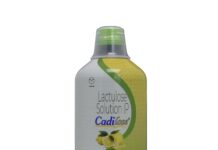Dr Chiranjiv Chhabra, leading dermatologist, Skin Alive Clinics, Gurgaon
New Delhi, Jan 23, 2015: For the romantic souls among us, winter is a season to long for. However, not all people feel hunky dory in the cold season, particularly those with weather related health issues and skin allergies. The dry and chilly conditions of winter are especially harsh on the skin. Our feet often bear the harshest burden of the winter chill. Cracked heels, irritated soles, and itchy and swollen feet can be a major irritant.
Feet are the most ignored part of the body. While women are anxious about their facial skin and hands to look healthy and beautiful, such a keenness is missing when it comes to feet. The moisturizers and creams that are religiously applied over the face and hands often bypasses the feet. Sometimes when we wake up to needs of the feet, we rush for pedicure sessions. However in winters our feet require more than knee jerk reactions.
Your feet stay enclosed in winters because of boots that we wear to protect our feet from thrilling cold and hence there can be bad feet odor that can develop due to less ventilation. Even the time when we sleep, we prefer wearing socks or feet warmers to stay warm and hence they get little or no exposure at all. Some people are extremely sensitive to winters and their skin start experiencing problems. There are severe infections that can spoil your feet health in such a situation like:
Chilbains: Chilblains is a common foot problem that happens in winters. They cause small, red itchy patches and swelling on the feet skin. It occurs when the feet are exposed to extreme chilly weather for prolonged durations. The blood vessels become small during winters and they get back to their normal size once the toes get warm. Blood can leak out of the blood vessels if your feet get warm in no time causing swelling, blistering and other various problems associated with chilblains. The swelling usually occurs on smaller toes but can spread to the major part of the feet. But your worry can be cured because chilblains can be prevented and treated. Anti fungal lotions, creams and powders can be applied to keep away fungal infection.
Raynaud’s disease: Raynaud’s affects smaller blood vessels like one present in toes. Less amount of oxygen reaches these blood vessels due to their shrinkage in size. Raynaud’s patients notice a change of colour in their toes, white, blue and then red according to how much blood and oxygen reaches them. Diabetic patients suffer a lot of issues with their diabetic feet getting cold in winters. The patients should consult the podiatrist on what type of shoes they should wear to avoid any further worsening of their feet.
Blisters: Blisters cause your foot skin to cause pesky bubbles and these pockets are filled up of blood, watery fluid or pus, if infected. It is caused by excessive freezing, burning, rubbing (friction) and infection. And if your shoes are causing you blisters then it is a sign that you should change your shoes or socks and consult a doctor.
Calluses and corns: Often you must have observed thickened skin on your feet and it develops when your skin tries to save itself from the cold weather, fiction and pressure. For most of the people, removing the sources of pressure and fiction eliminates the ailment and others have to consult a doctor and take necessary precautions.
At the same time, the dry and peeling skin in winters may take away all the beauty of the feet. So, not just for preventing infections and winter diseases, you also need to take care of the skin to keep it beautiful. Here are some ways to keep your feet protected in winters:
- Remove jagged skin: Moisturizing dead skin will not serve any purpose. It is important to remove the dead layer first by exfoliation once every month. This can be done with pumice stones or loofas, but mildly. It also helps remove the dirt and grime stuck to the hardened dead skin. Follow it with a hydrating moisturizer and leave it overnight.Scrubbing can also be lotions to done with the mixture of Sugar and Olive Oil with a few drops of mint or tea tree oil added to it for anti bacterial properties.
- Pamper your feet: Leave your feet soaked in warm water for 10 to 15 minutes twice a month. This helps soften the skin. Them rub the feet mildly, dry them thoroughly and apply a vitamin e rich cold cream. If your feet are susceptible to infections and inflammations, use an anti bacterial cream
- Nourish your feet: Use mashed banana mixed with lemon juice for a hydrating mask. Apply it all over your feet and wash it with warm water after 20 minutes. Apply moisturizing foot cream or petroleum jelly at least twice a day before going out and when you go to sleep. It is also very important to keep yourself hydrated in the winters also because cold weather, high winds and hot central heating all take away the moisture from your skin. So it is important to drink plenty of water.
- Care for toe nails: To groom your winter feet, you should regularly trim your nails. You can paint your nails in lively colors that will brighten up your feet. People might think that nail paints are toxic and can harm your nails while a good nail polish will protect your nails from damage, such as dryness and breakage. It can enhance nail growth and some nail paint brands have vitamins which helps in promoting nail growth and cuticle health·
- Check your cuticles: Cuticles help in protecting the nail matrix and hence one should not cut them. If you cut or remove your cuticles nothing will fill their open space and they will become more prone to diseases, fungus and infections. However, if you want your nails to look longer, you can slightly push them back.
- Wear Socks: To keep your feet protected in winters wear socks. They are as important as your scarves, caps and gloves. They will help prevent exposing your feet to the extreme climate. They will also prevent dust and dirt from sticking to the cream applied on to the feet.
- Wear Comfortable Shoes: Always remember to wear shoes that you are comfortable in. Avoid wearing tight shoes or high heels if your heels are hurting. This may lead to skin infections and sores.
- Consult a dermatologist: If you experience skin irritation, swelling of the feet or peeling off the skin, do consult a doctor as this may be a severe skin allergy and may need immediate medical intervention.
- Botox for excessive sweating: It is extremely important to wear warm, preferably woolen socks in winters. However, there are a few people who suffer from an extreme sweating disorder called hyperhidrosis. Such people sweat irrespective of weather. For such people, Botox is a wonderful remedy. It prevents sweating and keeps the feet dry.
We should not ignore our feet whether it is summer or winters because our feet are the weight bearers of our body who act as foundation of human anatomy. If any fungal infection goes ignored there can be worsened issues that will trouble you for season long.CCI Newswire
























